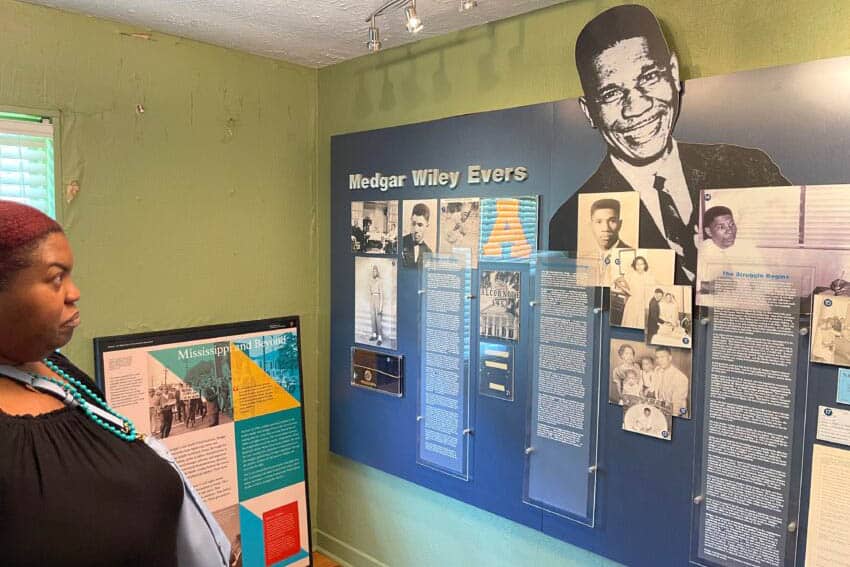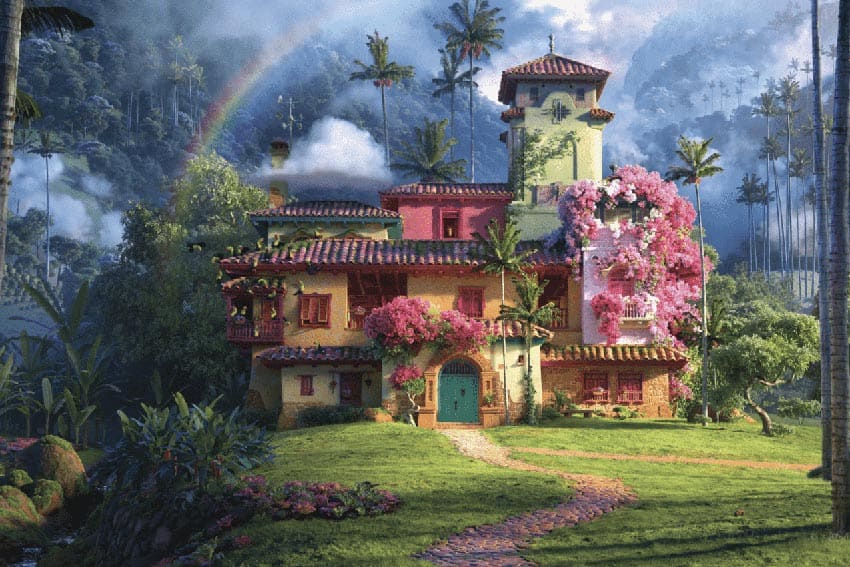The Fabled Montropolis is Found: Jackson Hole
By Richard Bangs

In the evolution of a place, there is sometimes a waymark between free-spirited childhood and the discreet somberness of maturity. But what if the in-between actually signifies the third point of a classic Hegelian dialectical triangle?
A rough and rowdy cowboy town at one point, an overly-wrought sophisticated metropolis at the other, and the third being some subtly unstated “third way” that draws on the contradictory nature of the first two states to create a superior third?
Watch Videos by Richard Bangs of
Jackson Hole
Jackson Hole may be that mythical intersection, deftly incorporating elements of the small town with the big city, a realization of humanity’s most advanced thought: the idea that recognizes its good self in all things.
So, what is Jackson Hole?
In 2011 John Kasarda published a book, Aerotropolis: The Way We’ll Live Next, describing a new urban form placing airports in the center with cities growing around them. I’ve been to many of these airport cities and found them soulless, clone-like, thick with franchises and the commerce of expediency. Jackson Hole has an airport, the only one in America in a National Park, but there is nothing Xeroxed about it.
The largest elk migration in the world is just outside the door. Try to find that anywhere else.
After traveling to metropolises and micropolises (populations between 10,000 and 50,000) around the world, this place seems different, something evolved to a higher plane, but what?
A Montropolis?

I scratch about and come up with what I think a suitable descriptor: a montropolis….a mountain town that offers up not just the riot of the natural world, and the cosmopolitan rewards of a first-class city, but then goes beyond.
The components: 1) a rich art culture 2) luxury and elegance, but of a rustic flavor 3) an abundance of wildlife 4) family friendliness 5) A strong conservation ethos and 6) a range of snow and ice adventures. These six ingredients, mixed generously together, concoct Jackson Hole, perhaps the first montropolis.
I decided to test my notion. Jackson Hole has a bewilderingly disproportionate number of artists and galleries: over 50 art galleries in a township of less than 10,000, and you can practically throw a snowball in any direction and hit an artist.
The Trio Gallery
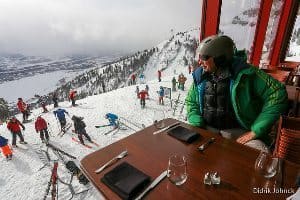
I begin with a stop at the Trio Gallery on North Cache Street, where I meet up with Kathryn Turner, a pedigree painter born and raised on a dude ranch in Grand Teton National Park. We sit in front of two towering, silvery canvases of aspens, so uncluttered they speak of Kathryn’s “beautiful destructionism,” wherein the results are so striking because she purposely leaves things out.
She says the hyper-dramatic landscapes of Jackson Hole inspire art….it’s everywhere one looks, ever-changing, and the natural desire is to try to capture, or render, or express. “Jackson Hole is a place of intensity. The mountains are intense; the climate is intense…and that intensity pushes art.”
To demonstrate Kathryn offers an alla prima, a “quick draw,” on the spot. She adjusts her easel, dips a brush into her soul, and beings her silent poetry. Minutes later, like morning fog lifting over the Snake River, there appears the lovely portrait of a horse from her ranch.
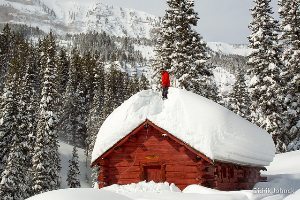
Plenty of snow on the roof. That evening the sky glows like a bottle of cognac held up to the light. I decided to explore some of the rustic-style elegance that is requisite in the model of montropolis. When I first came to Jackson I crashed on a guide’s log cabin couch, which was about as luxurious as you might get.
Plenty of Luxe
But today there is a plethora of luxury hotels, from the Four Seasons Resort in Teton Village to the Wort Hotel downtown to the Amangani, The Rusty Parrot, the Hotel Terra, and of course the soigné Spring Creek Ranch, where I’m staying. I have a cocktail with Steve Price, the general manager, at the Granary, the bar where the peaks outside the glass are skywriting.
“These are the first mountains that look like mountains should,” Teddy Roosevelt supposedly said when first gazing at the sonic architecture. Before him, it was a set of 18th century French-Canadian fur trappers, long on the road and womanless, who named the soaring mountains after female breasts: Tetons.
“I don’t think anyone in America didn’t want to grow up to be a cowboy or cowgirl, “Steve posits with a smile wide as a hammock. “And here you can become that dream, while still steeped in the finer things in life.
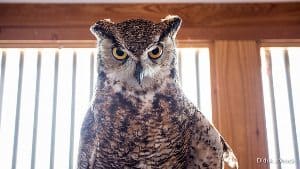
Rustic Elegance
“Rustic elegance here means you can kick up your boots like a cowboy, revel in the romance of the American West, wrap in the authenticity, but still enjoy the finest wines, food, and comfort to be found anywhere.”
For dinner, I meet up with Gavin Fine at Il Villagio Osteria, a seriously good Italian restaurant, and part of his Fine Dining Restaurant Group, which includes Rendezvous Bistro, Q Roadhouse, The Kitchen, and Bin 22. Gavin’s story is not dissimilar to so many who live here. He came out years ago from restaurant-rich Chicago for a weekend of skiing and never went back.
He’d been working at for Lettuce Entertain You in Chicago, and just found everything about Jackson more fulfilling, authentic and to his taste. “I chose Jackson Hole to stay and live because of the soul and the character. It’s not a stop off the highway. It’s a vast valley that sucks you in. And you never leave.” It sounds like Hotel California, though they actually do have that spirit from 1969.
The following day, under columbine skies, I head out to see the wildlife up close and personal. Some beasts are unavoidable…I keep running into traffic jams on the road as folks slow down to gawk at moose chewing branches a few feet from the pavement. But the grand display is the American Serengeti, the 25,000-acre National Elk Refuge, where up to 10,000 wintering elk make their grounds.

NSleigh ride in the Tetons. ear the entrance on the western side I jump on a horse-drawn sleigh, driven by guide Jeff Warburton, who entertains and informs as we jangle about the refuge wrapped in thick blankets, watching the elk aimlessly munch on staff-provided alfalfa pellets.
Where else can you get this close to a 1000 lb. feral animal with a rack the size of a chandelier? The theory is that by encouraging children and parents to get close enough to look into the eyes of a wild elk, it is harder to take actions that might hurt them. In many cases, says Jeff, people fall in love, and people conserve what they love.
Sleigh Ride
The sleigh ride is ideal for kids, including my six-year-old, Jasper, whose eyes are so wide he seems to be devouring the future. But it’s not the only family-friendly thing to do in Jackson Hole….in fact, the county has transformed into an outdoor concourse for kids, another of the montropolian merits. Not long ago the valley, which even at its lowest point is over a mile high, was a cult destination for extreme skiing; not much of a family stop.
But now the frozen assets include everything from bunny run skiing to tubing to snowshoeing, snowboarding, dogsledding, horseback riding, cross-country, snowmobiling, snow biking, ice climbing, sledding, ice skating…there’s even a children’s museum.
If ever you worry about the kids spending too much time in front of screens, this is the antidote to Angry Birds. Unplug, boot it down, let the screen be in the frame of the Tetons, and the glow come from the winter sun, and the challenges and glee come from Nature. Jackson Hole removes every excuse for staying in.
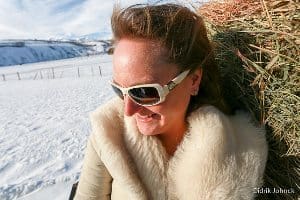
Another quality of the montropolis is a strong conservation ethos, and Jackson Hole is the birthplace of the modern conservation movement. Here they conserve soil, they conserve water, they conserve wildlife, they conserve open space, they conserve scenery.
It could be argued that the original Native Americans here embraced a conservation ethic as they revered these peaks that stretched their sky. There was a great spiritual connection. And the environment was so harsh and resources so limited it took a preservation stance to survive.
John D. Rockefeller, Jr. stood beneath the gleaming silver blades of the Tetons in 1924 and was mightily impressed. The Yellowstone Superintendent at the time seized the opportunity to explain the hope of protecting and preserving “this sublime valley” from unsightly commercial development.
Rockefeller decided to purchase offending private properties with the intention of donating them to the National Park. The creation of Grand Teton National Park finally occurred on September 14, 1950, when Harry S. Truman signed the bill. Now, 97% of the land in Teton County is protected.
Teton Raptor Center
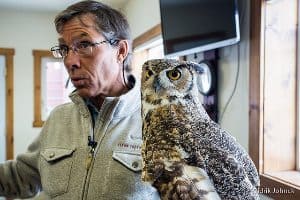
One synecdoche for the whole of the valley is the Teton Raptor Center. It started in 1997 when Roger Smith, a wildlife biologist, started receiving calls to take in injured raptors. As he took in more birds, he expanded to rescue and rehabilitation, and then education Roger Smith at the Teton Raptor Center. and conservation.
The center is now based in a set of old red barns at the base of Teton Pass in Wilson and seems about to burst its seams with birds of prey.
Roger shows off eagles, kestrels, hawks and gyrfalcons, and then brings out Owly, a female great-horned owl, whom Roger rescued after she was hit by a car. She does her Linda Blair head swivel, locks her big eyes onto mine, and we exchange meaningful looks. We connect.
Afterward I headed over to the Mead Ranch where I met up with Kate and her husband Brad Mead, whose great grandfather homesteaded here more than a century ago. In 2002, the family placed the ranch under conservation easement, ensuring that its pristine water, native pastures, open space, and language-defying scenery would be protected forever. And now they raise the happiest cows in the world.
Fantastic Lives for the Cattle
“For us, as a family, it’s really important that our cattle are treated right. They live a fantastic life out here. They hang out, look at the mountains, and don’t have to worry about much of anything. No feedlots; they roam free. We don’t give them growth hormones, steroids or antibiotics. We don’t feed them corn, just grass and recycled spent grains from the local brewpub. We treat them in a humane and respectful way. And they live quite a bit longer.”
Q Roadhouse

I’ve worked up an appetite listening to Kate, so head over to the Q Roadhouse, and meet Matty Melehes, the chef, who sizzles with local goodness here. “We have a local band, local artists on the wall, a burger from the Mead Ranch, on a bun from a local bakery, using mustard made from a local beer, cheese from a local farm, and I’m from Jackson Hole, so I’m local as well.”
Of course, I order a vegetable salad, but vegetables lack a sense of purpose when unaccompanied by a good cut of meat, so I call for the ranch burger as well, and it is, no denying, localicious.
I’m here in Jackson Hole to partake and begin with a cross-country ski run. I hook up with Jack Bellorado, who runs the Teton Pines Cross Country Ski Center, and together we head out to kick and glide some 10 miles of machine-groomed tracks beneath the fountains of the earth that are the Tetons.
In the afternoon I catch up with Jess McMillen, the Freeskiing World Tour Champion, and the U.S. Freeskiing National Champion, and a keen champion for Jackson Hole, which she says is the best training grounds for freeskiing there is. She was born here, but at 18 took off to check out the great cities and alpine villages of the world. It didn’t take long to return to the Golden Mean and plant roots. “I realized Jackson Hole has everything
I’m looking for.”
Blue and Black
It used to be that the skiing was famously black, on big terrain, but now they’ve re-designed so there are blue runs to the base at every major lift, making this a family-friendly experience. Still, once at the top, Jess says “Let’s go ski some cowboy powder,” and rockets away, blond hair flying, and I’m left to enjoy the view and the blue. Can’t blame her. There are no friends on a perfect powder day.
For my final outing I team up with Mike Halpin, owner of Lost Creek Ranch Lodge & Spa. Mike is a sled head, a snow machine buff, and claims that Jackson Hole has the best snowmobiling in the world. He offers to take me on one of his favorite runs, a ten-mile spin to Granite Hot Springs.
It’s snowing hard when we start out (in the winter Jackson Hole gets 42 days of snow…every month), but soon clears to ice blue skies as we whiz past dogsledders and scenery that chews it is so dramatic. After a couple hours riding through this supernal painting, our noses fill with the sharp perfume of sulfur.
We park, and slip into a little rip in the earth’s crust that is the 104-degree hot springs, and soak away whatever residual blues came from beyond the blazing poetry of this place. At this moment it seems life beyond this valley is an error. This is the place to be. This is montropolis.
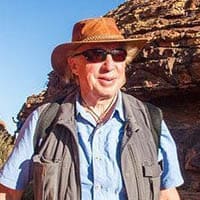 Richard Bangs is a videographer and travel writer. View more of his work at his website, richardbangs.com
Richard Bangs is a videographer and travel writer. View more of his work at his website, richardbangs.com
- These 9 U.S. National Parks Require Reservations in 2024 - April 17, 2024
- Take a Hike in Olympic National Park - April 17, 2024
- The Wild Mississippi: 2340 Miles Across Ten States - April 8, 2024


